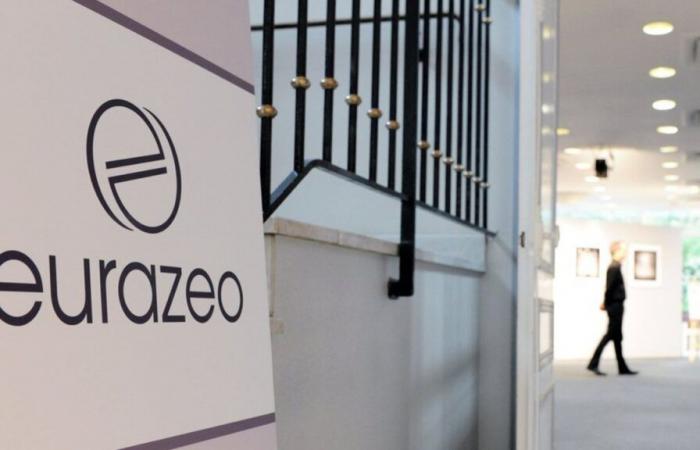
(BFM Bourse) – “Holdings” are companies investing in various activities and companies. At the end of 2023 in Europe, their stock market discounts compared to an accounting measure of their values remained much higher than before the health crisis, according to a recent study by Finexsi.
This is a term that comes up often on the stock market, the “holding discount”. To understand it, let’s remember that a holding company is an investment company that owns interests in various activities. However, the markets tend to prefer “pure-players”, companies specialized in one activity, to these more diversified companies.
This is why these companies systematically suffer from a “discount”, that is to say that their stock market valuation is significantly lower than the sum of their various holdings and activities on an accounting level.
At the end of 2023, Vivendi launched a project to separate itself into four different listed companies. The stated aim of the media, communications and video game company was precisely to reduce its “conglomerate discount”. Barclays had then estimated that this discount would amount to around 45% in October 2023.
>> Access our exclusive graphic analyses, and enter the confidence of the Trading Portfolio
The case of Vivendi is certainly a little special because the company has relatively similar activities, with television, communication, publishing and video games. An investment company generally has interests in a higher number and variety of sectors.
In a recent study, the Finexsi firm reviewed these holding company discounts. In particular, it recalled the various reasons that can justify them. The absence of synergies between activities is one, as are operating costs, the low liquidity of holdings (particularly in unlisted groups) or even “tax friction” linked to the taxation of capital gains in the event of asset disposals. Another cause cited by Finexsi: “the inability for the investor to make arbitrages within the assets held by the holding company”. More generally, the market’s perception can lead these discounts to widen or reduce.
A still high discount
Finexsi thus studied the evolution of this discount between the end of 2018 and the end of 2023, using for this the difference between the stock market value of the company and its revalued net assets (NAV).
This NAV constitutes, to simplify, a more accounting measure of the value of the company’s equity. The NAV is determined by calculating separately the value of each asset and liability of the company and then adding them together (debt being subtracted from gross assets to give net assets). Different methods can be used to evaluate the values of investments, such as the approach by multiples observed on comparable listed companies or by discounted cash flows (we have devoted an article to these methods).
Finexsi selected a sample of 16 listed European holding companies, including the French investment companies Wendel and Eurazo as well as Peugeot Invest, the investment vehicle of the Peugeot family (with stakes in Stellantis, Forvia and Spie). Or Exor, the investment company of the Agnelli family, which owns shares in Stellantis, Ferrari, but also Juventus Turin, Philips and Christian Louboutin.
The firm compared the difference between the stock market price of each of these companies (Finexsi takes the average of the five closing prices following the publication) and their NAV per share published at the end of a quarter (i.e. at the end of March, end of June, end of September, and end of December). This made it possible to define an average NAV discount and therefore a percentage holding discount for the sample at each period.
Several phases emerge, as illustrated in the graph above. From December 2018 to September 2019, this discount remains measured (around 20%). Then the discount jumps sharply between September 2019 and December 2019, due to the health crisis.
Explanation: the NAVs at the end of December 2019 are published by the various holding companies in March or even April 2020. However, at this time, shares plummeted due to the pandemic and health restrictions, while the NAV per share, determined at the end of December, is relatively stable. Hence the exploding discount.
From December 2019 to September 2021, the discount is reduced from 36% to 18%. “Stock prices are rising continuously and faster than NAVs over this period, supported by the accommodative budgetary and monetary policies of governments and the European Central Bank in response to the consequences of the health crisis,” explains Finexsi.
This was followed by a further widening of this discount between September 2021 and September 2022, with a new peak at 36%. “This development should be seen in light of the fall in stock market prices in a context of inflation, geopolitical tensions and rising interest rates,” Finexsi said.
The discount then stabilised at around a figure above 30%, with NAVs and stock prices moving more or less in sync. However, at the end of December, the average discount of European holding companies was higher than its five-year average (34% at the end of December compared with a five-year average of 26%).
Ways to reduce the discount
Although Finexsi closed its accounts at the end of December 2023, it is not certain that these discounts have been absorbed since then. In its first-half results, Wendel indicated that its NAV per share was €171.3, while Eurazeo estimated that the net value of its portfolio was €106.9. Compared to their respective stock prices at the time of publication, this reflected discounts of 48% and 32% respectively.
It remains to be seen whether companies will be able to close the discount on holding companies. When it is too pronounced, companies can buy back shares – within the limits authorized by their board of directors – to reduce it.
Disposals can be another lever, because investment companies generally sell their holdings at a significant premium (e.g. 40%) compared to the valuation retained in the NAV. This crystallizes value and helps reduce stock market depreciation.
In any case, the Degroof Petercam bank judged for Eurazeo, at the end of July, that the discount on the investment company’s NAV should be reduced from the moment when the “realisations” (disposals) accelerate and Eurazeo thus manages to prove to the market that its NAV is an “achievable” NAV.
Julien Marion – ©2024 BFM Bourse
Are you following this action?
Receive all the information on EURAZEO in real time:



